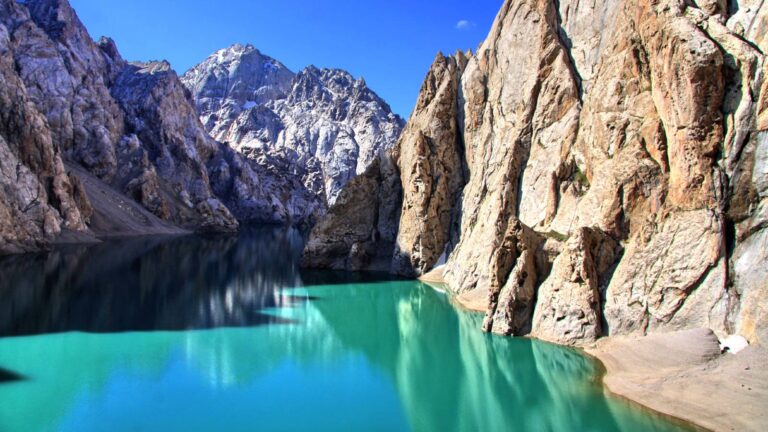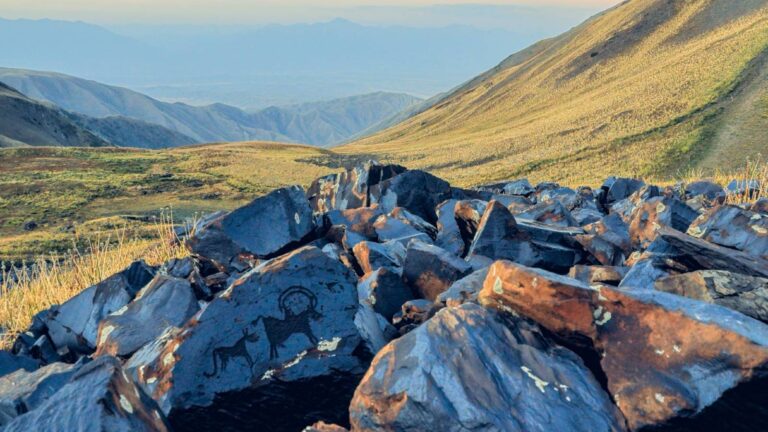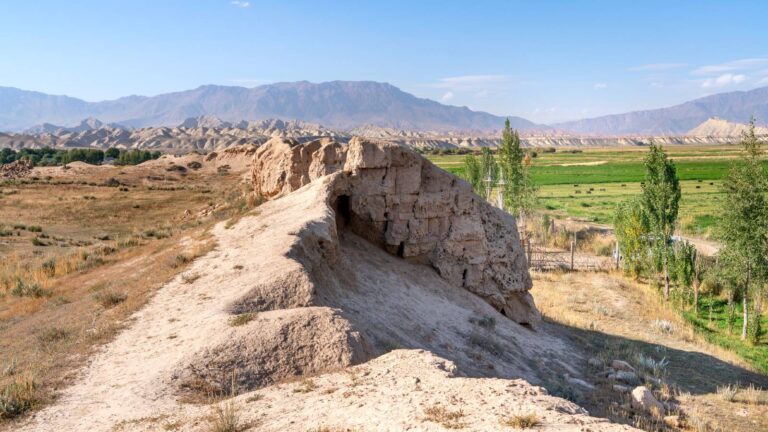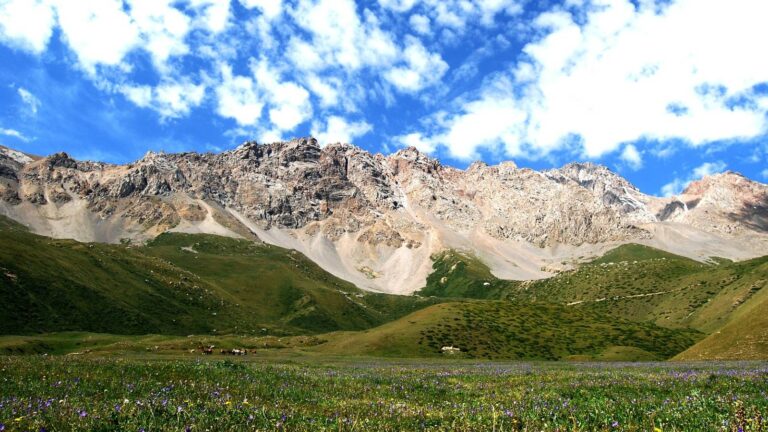Getting There
The turn to Tash-Rabat is located at about 100 km of the Naryn-Torugart road. On the road there is a sign with the inscription Tash-Rabat and a Foursquare table.
What to Expect
This is a superbly preserved cultural and historical monument, the only one of its kind on the territory of Kyrgyzstan and one of the most important remnants of the Great Silk Road in such a state of preservation.
Tash-Rabat was built on an artificial platform, on a mountain and is a rectangular building with sides facing the 4 cardinal points.
The front side with the portal looks to the east. On the entire outer side around the pillars of the gate-doors there are stone benches. In the large corridor and in the hall, the floor is paved with flat stone; in the rest of the rooms and corridors, the floor is not covered with anything.
History
Tash-Rabat was built in the 15th century on the site of an older monastery from the 9th-10th centuries. There are two versions of its foundation: the first is that the fortress was founded by a khan who wanted to protect trade caravans from robbers and at the same time contribute to the development of the country. The second is that it was founded by a local rich man, but the construction of this castle was not completed for unknown reasons.
Over time, Islam finally took root in Central Asia, the monastery began to decline. However, proximity to the Silk Road did not allow the temple to turn into a desert. It was used as a caravanserai.
It is believed that Tash-Rabat was a key point when crossing the Tien Shan, as it not only provided shelter for merchants but also served as a fortification during raids by robbers. Through Tash-Rabat, trade caravans were sent to the cities of the Ferghana Valley.
Facilities Available
- There is no communication in the gorge.
- There are several yurt camps for tourists with the opportunity to eat and sleep.
- Drinking water from the river without boiling is not recommended.
- There are a lot of places for picnics, tents and camping.




